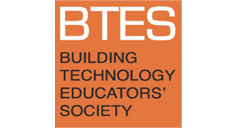Microclimates at the Sixth Facade
Abstract
Elevating buildings above grade is an increasingly- common design approach to address risks of costal and riverine flooding. While elevating buildings improves resistance to flood waters and potentially debris damage, other implications are less well-understood, including the influence of unique thermal and moisture conditions in the space between the ground and the underside of the elevated building—the so-called sixth facade. Unlike conventional basements, crawlspaces, or slabs-on-grade that respond to soil moisture through the installation of a vapor barrier, exposed, elevated floors contend with unique hygrothermal conditions, linked-to but distinct- from both the soil and the ambient air.
Uncontrolled moisture has significant energy consequences, can foster mold and fungi growth, and contributes to deterioration of building materials through rot and corrosion. To better understand conditions at the sixth facade, this study compares the conditions of the sixth facade to those of the interior and exterior ambient air of the same elevated building during the condensation-risk period of a year. Temperature and relative humidity were recorded inside, under, and adjacent-to the building at sub-hourly intervals for eleven months, to enable calculations of condensation risk. While extensive prior literature considers condensation in wall and roof assemblies and vented versus unvented crawlspaces; little data or guidance is available about the frequency of condensation risk on the underside of elevated buildings. The growing awareness and effort to improve building resilience at the residential scale demands a greater understanding of conditions at the sixth façade to guide design.
Keywords: Structures, Energy and Systems, Elevated Buildings, Building Envelope, Moisture Control
How to Cite:
Reed, A. & Fannon, D., (2019) “Microclimates at the Sixth Facade”, Building Technology Educators’ Society 2019(1). doi: https://doi.org/10.7275/jv9a-7z52
Downloads:
Download PDF
417 Views
165 Downloads
